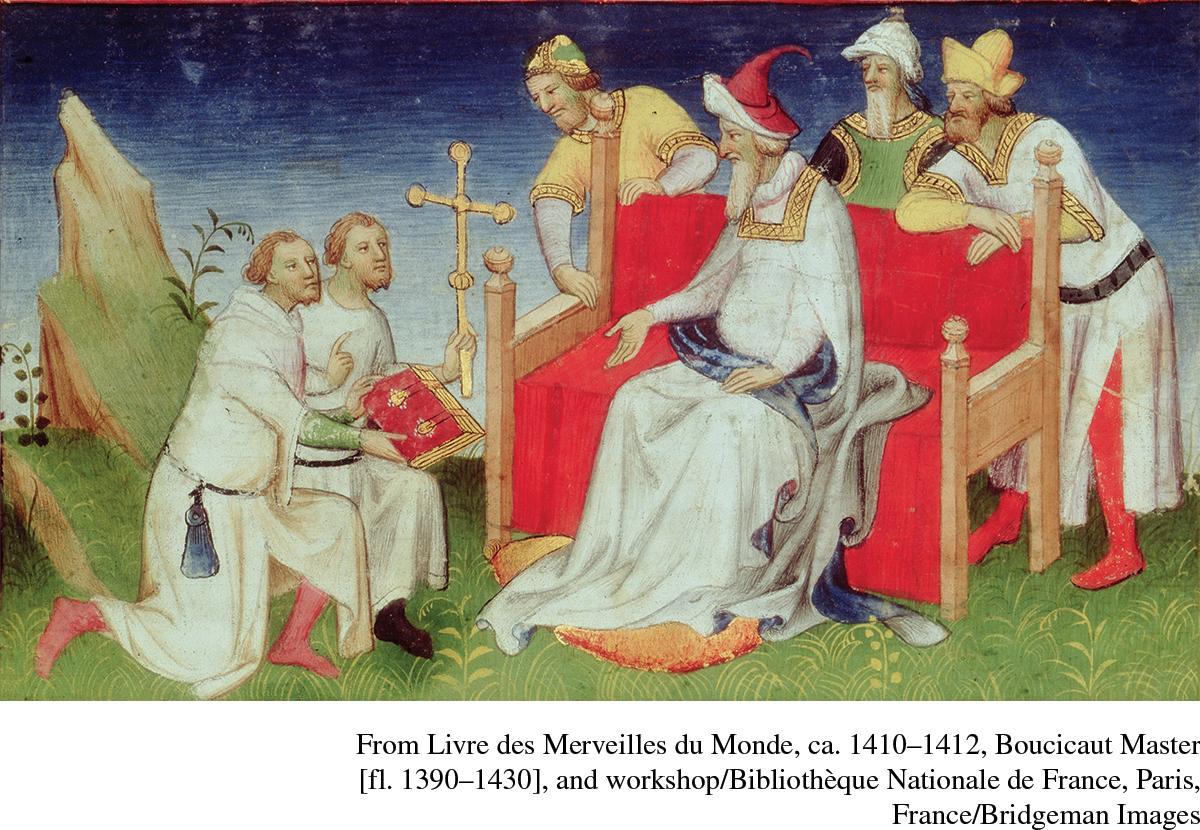China and the Mongols
Long the primary target for pastoral steppe dwellers in search of agrarian wealth, China proved the most difficult and extended of the Mongols’ many conquests, lasting some seventy years, from 1209 to 1279. The invasion began in northern China, which had been ruled for several centuries by various dynasties of pastoral origin and was characterized by destruction and plunder on a massive scale. Southern China, under the control of the native Song dynasty, was a different story, for there the Mongols were far less violent and more concerned with accommodating the local population. Landowners, for example, were guaranteed their estates in exchange for their support or at least their neutrality. By whatever methods, the outcome was the unification of a divided China, a treasured ideal among educated Chinese. This achievement persuaded some of them that the Mongols had indeed been granted the Mandate of Heaven and, despite their foreign origins, were legitimate rulers. One highly educated Chinese scholar wrote a short biography of a recently deceased Mongol official, praising him for curtailing the violence of Mongol soldiers, offering leniency to rebels, and providing tax relief and food during a famine. In short, he was behaving like a good Chinese official.
Change
How did Mongol rule change China? In what ways were the Mongols changed by China?
Having acquired China, what were the Mongols to do with it? One possibility, apparently considered by the Great Khan Ogodei (ERG-
That accommodation took many forms. The Mongols made use of Chinese administrative practices and techniques of taxation as well as their postal system. They gave themselves a Chinese dynastic title, the Yuan, suggesting a new beginning in Chinese history. They transferred their capital from Karakorum in Mongolia to what is now Beijing, building a wholly new capital city there known as Khanbalik, the “city of the khan.” Thus the Mongols were now rooting themselves solidly on the soil of a highly sophisticated civilization, well removed from their homeland on the steppes. Khubilai Khan (koo-

Despite these accommodations, Mongol rule was still harsh, exploitative, foreign, and resented. Marco Polo, who was in China at the time, reported that some Mongol officials or their Muslim intermediaries treated Chinese “just like slaves,” demanding bribes for services, ordering arbitrary executions, and seizing women at will—
In social life, the Mongols forbade intermarriage and prohibited Chinese scholars from learning the Mongol script. Mongol women never adopted foot binding and scandalized the Chinese by mixing freely with men at official gatherings and riding to the hunt with their husbands. The Mongol ruler Khubilai Khan retained the Mongol tradition of relying heavily on female advisers, the chief of which was his favorite wife, Chabi. Ironically, she urged him to accommodate his Chinese subjects, forcefully and successfully opposing an early plan to turn Chinese farmland into pastureland. Unlike many Mongols, biased as they were against farming, Chabi recognized the advantages of agriculture and its ability to generate tax revenue. With a vision of turning Mongol rule into a lasting dynasty that might rank with the splendor of the Tang, she urged her husband to emulate the best practices of that earlier era of Chinese history.
However one assesses Mongol rule in China, it was relatively brief, lasting little more than a century. By the mid-